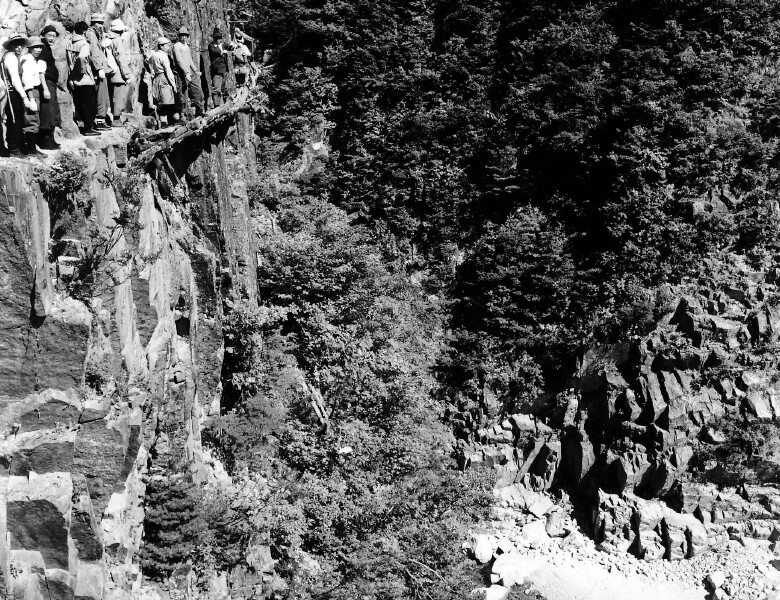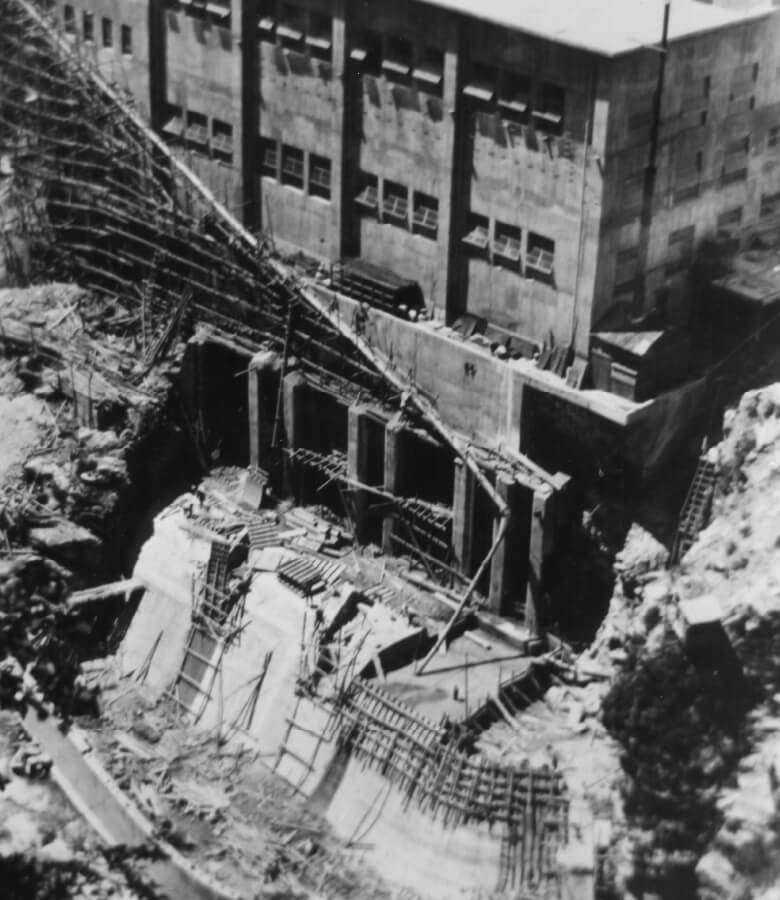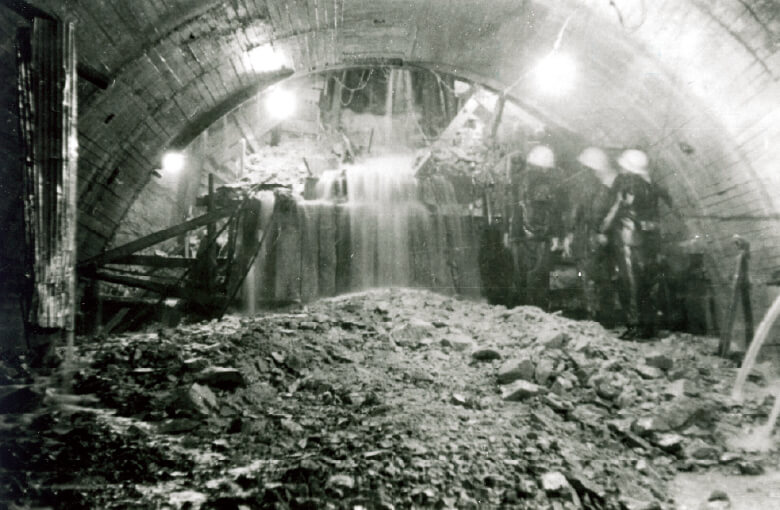It began with the exploration of a largely unknown area
While it was suitable for hydroelectric power generation, the Kurobe River, in a wild and harsh environment, had long blocked the movement of people. The first investigation began in 1917, as the country was searching for electrical sources that could be sued for aluminum production. It began with a walkway no more than 50 centimeters wide being hung along the side of cliffs. It was from these dangerous beginnings, through countless challenges and hardship, that Kurobe River hydroelectric power generation, which is so important for so many people and industry, was made possible.



